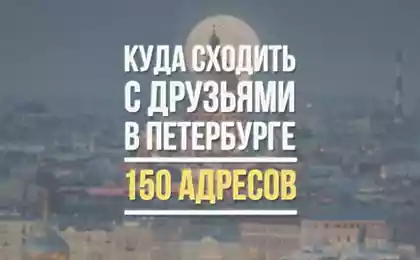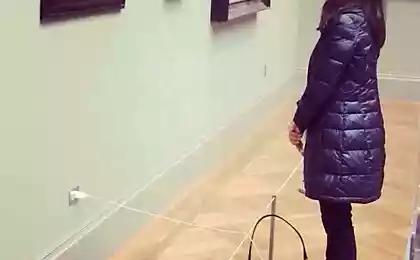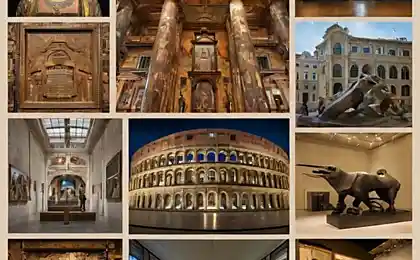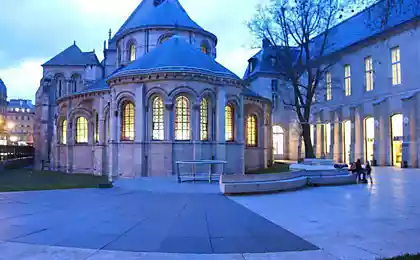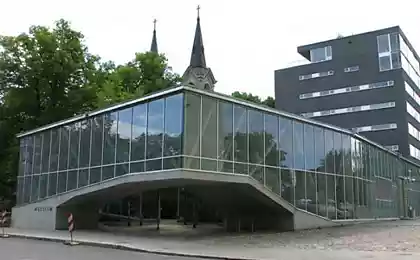760
Occupation Museum in Tallinn
From the information on the website of the museum: "The permanent exhibition opened in 2003 reflects the development of the Museum of occupation of Estonia in 1940-1991, when Estonia was alternately occupied by the Soviet Union and Germany, then the Soviet Union ..."
This is not some stёbny "muzeychik occupation" - everything is as it were serious ...
PS: I'll get watered-srach not breed. It will ask!
28 ph via periskop
1. The Museum of the Occupation Estonians did not give an already existing building, as the Latvians and Lithuanians, and built a new, modern - glazed from floor to ceiling. Located in the museum at the edge of Vana Tallinn and the move to a seven-minute walk from the Cathedral and Toompea Al.Nevskogo.

2. Inside the museum.
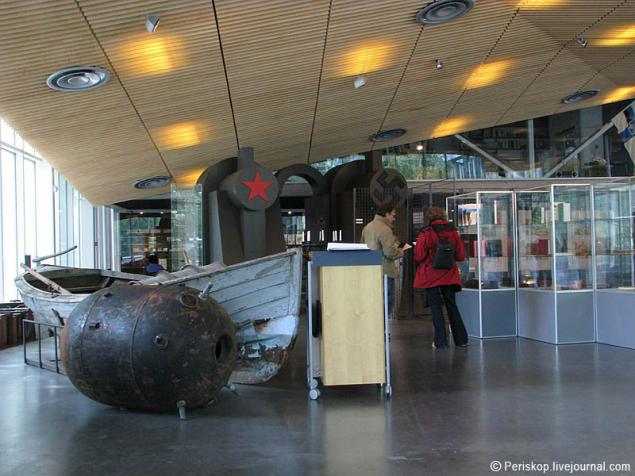
3. The composition "Two Steam" occupies a central place in the exhibition and is dominant, as if designed to constantly remind the visitor of the Nazi-Soviet "identity." And by the way, the correct name of the museum - the Museum of occupation (not one of occupation). Although, in fact, a lie is evil - because about 97% of the exposition is devoted only to the Soviet era.

4. Exhibits time of the Nazi occupation (1941-44) piece and find them among the diversity challenge. However, the Nazi episode in the history of Estonia, the creators of the exhibition are quite complacent (their comments show the 2nd part), noting its softness and calm for the country, compared to the Soviet occupation.

5. Before the steam locomotive is so cute here zhelezyachnye kreatiff.

6. Let zaydёm for "Two Steam" and look at the back of their boilers.

7. Steam Engine, co-stars in the rear is the grandfather Lenin (Stalin is not that interesting!), And in the next - the Fuhrer of the Third Reich.

8. For "Steam Engine" are showcases with exhibits, as well as a space for meditation. You can sit on a chair and indulge in a long video and audio on the theme of ritual soveyskih occupiers. In principle, an educated decision.

9. approached the meditative storefronts closer. In the foreground - Finn, German and Russian, all in the form of the era, with strained to place persons with woolen tights, why created some surreal watching experience.

10. Meditation is very relevant here, because right next door to the office, "Defence League" (sort Estonian DOSAAF). In the photo - packed by all the canons of the guy from the office.

11. A long row of suitcases at the glazing may symbolize the Great Baltic Link.

12. If the shift from glass closer to the end wall, we see the beginning of the collection of "Soviet" artifacts (dental chair, a telephone booth, etc.); for fencing, framed by a banner - the entrance to the main Baltic Occupation WC

13. Before entering the G.P.O.Vaterklozet - a collection of Soviet prison doors (represented, of course, realistic zamurzannye copies). To inspire youngsters in a difficult time grown fearless "fighters with a shovel."

14. This is one of the most colorful doors in this collection.

15. In a glass appendix far corner - a cinema. For collective rites and meditation.

16. More look at a piece of the collection of Soviet affairs.

17. Soviet "invalidkoy" closer.
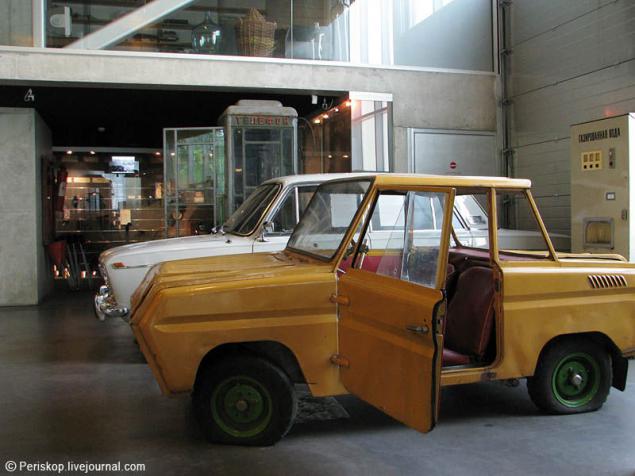
18. And of course, "Zhiguli" -Classic. There is "treshka" strange that no "penny".

19. The Phonebooth.
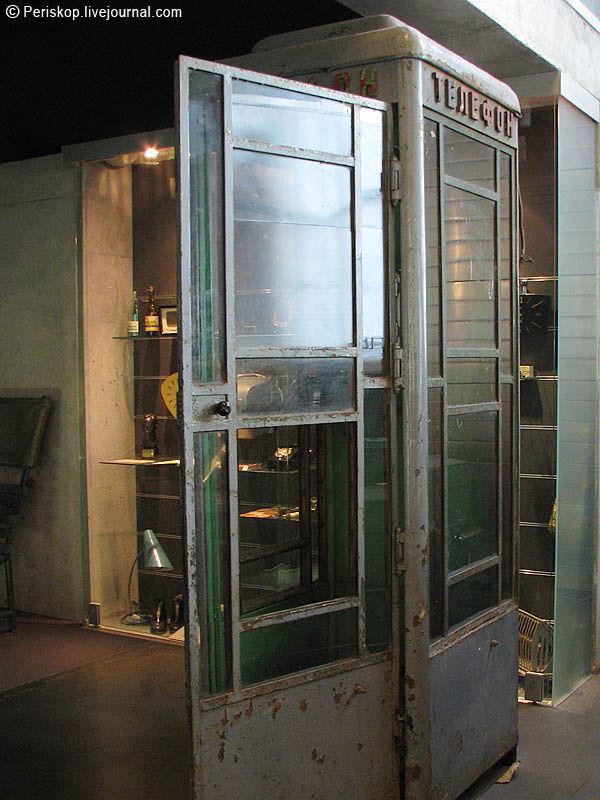
20. pay phone in it. Interestingly, the renovation-restoration of artifacts museum workers especially do not bother, so looking at it from the youth was formed right attitude to "scoop." On the other hand - well, it's all saved.

21. Public Phone closer.

22. The apparatus gazvody. Alas, it presented only later instance, the early '80s. It is a pity, because the devices 60 - 70 were much more charismatic design.
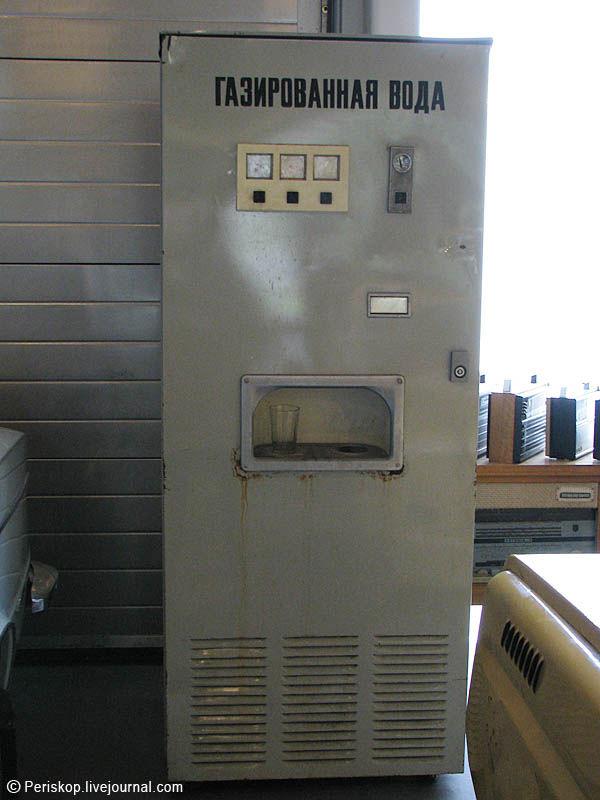
23. In the floor, trampled underfoot visitors vmurovaniya also has some mysterious for me devices (connections?).

24. In general, if you look at the exhibition of artistic and carefully, on the play of shadows and reflections, it is possible to make an entire clothing collection photoinstallation. I did not have so much time there, but I appreciated the usefulness of solid glass for such purposes.

25. More things Soviet. An old hair from barber shop, and more.
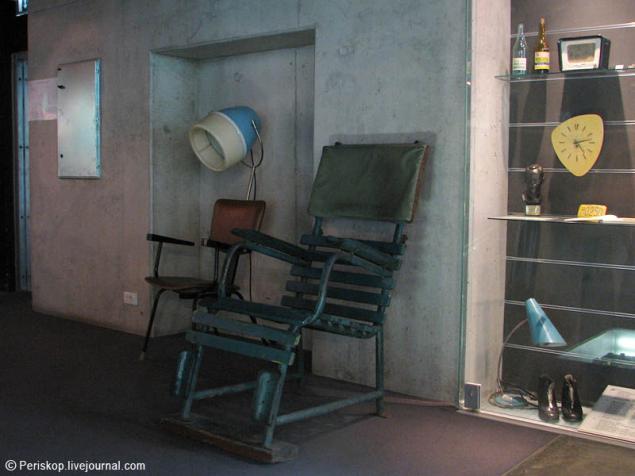
26. Well, and "Room investigator", of course - without it, the faithful in the Baltic museum does not.

27. Showcases: equipment KageBe, Siberian boots, first of toilet paper, a device for seaming cans and other artifacts of the Soviet occupation.

28. Plates with Interior army left the former Soviet Army at the urgent care and disordered in 1992-1994.

Source:
This is not some stёbny "muzeychik occupation" - everything is as it were serious ...
PS: I'll get watered-srach not breed. It will ask!
28 ph via periskop
1. The Museum of the Occupation Estonians did not give an already existing building, as the Latvians and Lithuanians, and built a new, modern - glazed from floor to ceiling. Located in the museum at the edge of Vana Tallinn and the move to a seven-minute walk from the Cathedral and Toompea Al.Nevskogo.

2. Inside the museum.

3. The composition "Two Steam" occupies a central place in the exhibition and is dominant, as if designed to constantly remind the visitor of the Nazi-Soviet "identity." And by the way, the correct name of the museum - the Museum of occupation (not one of occupation). Although, in fact, a lie is evil - because about 97% of the exposition is devoted only to the Soviet era.

4. Exhibits time of the Nazi occupation (1941-44) piece and find them among the diversity challenge. However, the Nazi episode in the history of Estonia, the creators of the exhibition are quite complacent (their comments show the 2nd part), noting its softness and calm for the country, compared to the Soviet occupation.

5. Before the steam locomotive is so cute here zhelezyachnye kreatiff.

6. Let zaydёm for "Two Steam" and look at the back of their boilers.

7. Steam Engine, co-stars in the rear is the grandfather Lenin (Stalin is not that interesting!), And in the next - the Fuhrer of the Third Reich.

8. For "Steam Engine" are showcases with exhibits, as well as a space for meditation. You can sit on a chair and indulge in a long video and audio on the theme of ritual soveyskih occupiers. In principle, an educated decision.

9. approached the meditative storefronts closer. In the foreground - Finn, German and Russian, all in the form of the era, with strained to place persons with woolen tights, why created some surreal watching experience.

10. Meditation is very relevant here, because right next door to the office, "Defence League" (sort Estonian DOSAAF). In the photo - packed by all the canons of the guy from the office.

11. A long row of suitcases at the glazing may symbolize the Great Baltic Link.

12. If the shift from glass closer to the end wall, we see the beginning of the collection of "Soviet" artifacts (dental chair, a telephone booth, etc.); for fencing, framed by a banner - the entrance to the main Baltic Occupation WC

13. Before entering the G.P.O.Vaterklozet - a collection of Soviet prison doors (represented, of course, realistic zamurzannye copies). To inspire youngsters in a difficult time grown fearless "fighters with a shovel."

14. This is one of the most colorful doors in this collection.

15. In a glass appendix far corner - a cinema. For collective rites and meditation.

16. More look at a piece of the collection of Soviet affairs.

17. Soviet "invalidkoy" closer.

18. And of course, "Zhiguli" -Classic. There is "treshka" strange that no "penny".

19. The Phonebooth.

20. pay phone in it. Interestingly, the renovation-restoration of artifacts museum workers especially do not bother, so looking at it from the youth was formed right attitude to "scoop." On the other hand - well, it's all saved.

21. Public Phone closer.

22. The apparatus gazvody. Alas, it presented only later instance, the early '80s. It is a pity, because the devices 60 - 70 were much more charismatic design.

23. In the floor, trampled underfoot visitors vmurovaniya also has some mysterious for me devices (connections?).

24. In general, if you look at the exhibition of artistic and carefully, on the play of shadows and reflections, it is possible to make an entire clothing collection photoinstallation. I did not have so much time there, but I appreciated the usefulness of solid glass for such purposes.

25. More things Soviet. An old hair from barber shop, and more.

26. Well, and "Room investigator", of course - without it, the faithful in the Baltic museum does not.

27. Showcases: equipment KageBe, Siberian boots, first of toilet paper, a device for seaming cans and other artifacts of the Soviet occupation.

28. Plates with Interior army left the former Soviet Army at the urgent care and disordered in 1992-1994.

Source:
